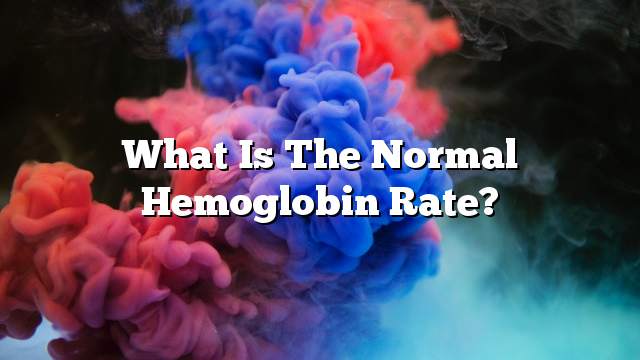Definition of hemoglobin
Hemoglobin is a protein found in the red blood cells that makes blood cells red. Its function is to transport oxygen from the lung to various organs in order to function perfectly. It transfers carbon dioxide from the body to the lung to expel it from the body, Hemoglobin plays an important role in maintaining the shape of red blood cells. In its natural form, it maintains the stability of the pellets so that its shape is circular and concave, and when it is abnormal it destroys the main shape of the pellets, thus disrupting its function and flow in the blood vessels.
Hemoglobulin contains iron, which is the essential element for the transport of oxygen and carbon dioxide so that its bonding ability in the oxygen is high when oxygen concentration is high in the ocean, ie in the lung. When oxygen concentration is lower in the ocean, It is used for cell utilization.
Normal hemoglobin in the body
The normal range of hemoglobin differs from one person to another according to age and sex as follows:
- Normal ratio for men: 13.5-17.5 g / dl.
- Normal female ratio: 12-16 g / dl.
- Normal percentage of pregnant women: 11-12 g / dl.
- Natural percentage of children:
- At birth: average 16.5 g / dL.
- 1-3 days: average 18.5 g / dl.
- 1 week: average 17.5 g / dl.
- 2 weeks: average 16.5 g / dL.
- 1 month: average 14.0 g / dL.
- 2 months: average 11.5 g / dl.
- 3-6 months: average 11.5 g / dl.
- 0.5-2 years: average 12.0 g / dL.
- 2-6 years: average 12.5 g / dl.
- 6-12 years: average 13.5 g / dl.
- 12-18 years Females: average 14.0 g / dl.
- 12-18 years Male: average 14.5 g / dL.
If the percentage of hemoglobin is lower than this rate can be raised, by improving the diet by focusing on eating vegetables, fruits, red meat especially liver, chicken, whole grains such as lentils, and bulgur as chickpeas and beans with a focus on leafy vegetables Green spinach and hibiscus.
Causes of hemoglobin deficiency in the body
The lack of hemoglobin in the blood leads to anemia of all kinds, which leaves the body tired and tired and gives the skin a pale yellow color with the inability of the body to do the simplest work. The causes of anemia are divided by reason to the main sections as follows:
- Reduced production of red blood cells, for several reasons including:
- Aesthetic anemia.
- Crabs.
- Some medications, such as antiviral drugs, chemotherapy drugs, anti-HIV drugs, some cancer drugs.
- cirrhosis.
- Cancer of the lymph nodes (Hodgkin’s disease).
- Hypothyroidism.
- Anemia due to iron deficiency.
- Chronic Kidney Disease.
- Lead poisoning.
- blood cancer.
- Multiple myeloma.
- Metastatic dysplasia syndrome.
- Anemia due to vitamin B12 deficiency.
- Excessive fracture in red blood cells, has several causes including:
- Inflammation of the spleen (spleen).
- Porphyria.
- Sickle cell anemia.
- Thalassemia.
- Inflammation of blood vessels.
- Hemolysis.
- Loss of blood in large quantities, and has several reasons, including:
- Bleeding from the wound in large quantity.
- Bleeding in the digestive system, such as: bleeding ulcer, cancer and hemorrhoids.
- Bleeding in the urinary tract.
- Frequent blood donation.
- Heavy menstrual bleeding.
Causes of hyperglycemia in the body
Sometimes there is a clear rise in the proportion of hemoglobin in the blood beyond the normal rate and this is due to the need of the body to carry more oxygen, and this happens due to one of the following reasons:
- Chronic obstructive pulmonary disease (chronic obstructive pulmonary disease) and other lung diseases.
- Congenital heart disease in adults.
- Pulmonary edema.
- Heart failure.
- Kidney cancer.
- Liver Cancer.
- Live high, where there is less oxygen in the air.
- Real reddish disease.
- Smoking, which may lead to lower levels of oxygen in the blood.
- Dry body fluids.
- Burns.
- Severe and persistent vomiting.
- Practice some violent sports.
